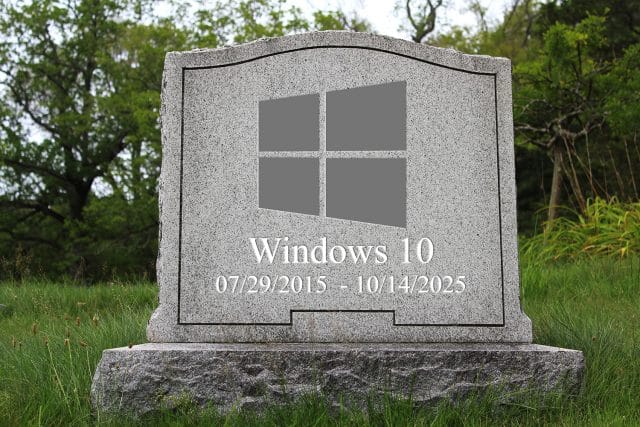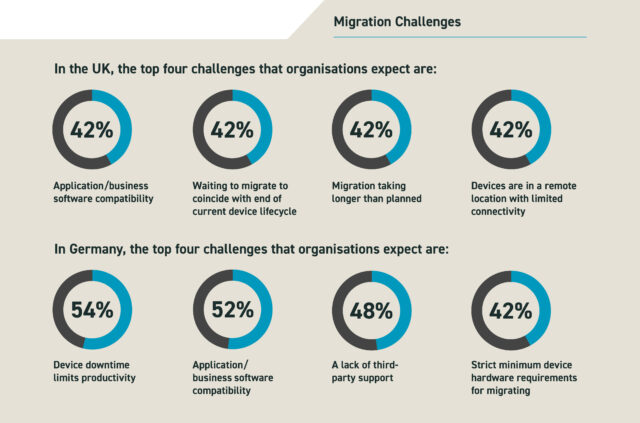Organizations face cost and security risks as Windows 10 end-of-life deadline approaches

With support for Windows 10 ending on 14 October 2025, new research from Panasonic Toughbook highlights growing concern among organizations about the risks and challenges of migrating to Windows 11. The findings point to worries around security, software compatibility, and rising costs for those delaying the upgrade, which is something the UK government also warned about recently.
Panasonic’s whitepaper, Navigating the Shift: The Business Case for Upgrading to Windows 11, outlines how many businesses are struggling to manage the transition, especially those with large device fleets.
Most surveyed organizations are still only part-way through the migration and face choices around whether to move quickly or invest in Microsoft’s Extended Security Updates (ESU).
According to the research, 98 percent of respondents say they are likely to purchase ESU if their migration is not completed by October. Among those still in progress, 58 percent do not feel confident about managing device security without upgrading or investing in ESU.
The main concerns include increased ransomware and malware risks (94 percent), potential data breaches (93 percent), lack of security patches (91 percent), compliance issues (89 percent), and reputational harm (88 percent).
The cost of Windows 10 EOL
The financial impact of delaying migration is also front of mind. Two-thirds of respondents expect overall costs to rise if they don’t act soon. More than half anticipate higher cybersecurity costs, while 48 percent foresee growing support expenses.
Business continuity concerns were raised by 46 percent, with additional costs expected from maintenance (40 percent) and hardware upgrades (38 percent).
Microsoft has advised that an enterprise with 1,000 devices could face ESU costs of around $433,255/£320,000 across the three years the support is available.
For many businesses, the whitepaper argues, that’s an immediate and measurable expense that could be avoided with a planned migration strategy.
Chris Turner, Head of Go-to-Market at Panasonic Toughbook Europe, said: “The window is closing for organizations to make a well-planned, measured and cost-effective transition to Windows 11 and start unlocking its benefits. The cost, security, and performance risks of delay are steadily increasing as the end-of-life deadline approaches, which is especially concerning in the critical sectors we surveyed including emergency services, field services and utilities, and defense organizations.”
A shift to Windows 11 often requires a hardware refresh. Surveyed organizations report that 62 percent of their average 4,000 devices need to be replaced or upgraded to support the new OS. That figure jumps to 76 percent for organizations with more than 5,000 employees.
This hardware dependency is one reason why 75 percent of organizations are adopting a phased migration. Around 25 percent are holding off on the software upgrade until older devices are retired.

Device downtime is another barrier, with 45 percent of respondents saying they are concerned about lost productivity during upgrade cycles.
Compatibility issues with existing business and application software are flagged by 47 percent, adding another layer of complexity.
Most organizations are planning to handle upgrades through a mix of remote (46 percent) and in-person (54 percent) methods, and 64 percent say they expect strong support from their device manufacturers during the process.
Despite the challenges, many businesses already migrating see clear value in making the switch. Security and protection is the top expected benefit (44 percent), followed by performance improvements (36 percent) and future-proofing their device ecosystem (36 percent).
Some are also looking ahead to new tools, with 34 percent planning to use AI features like Microsoft Copilot and Bing AI, and 29 percent interested in edge AI capabilities for field work.
Turner added: “Organizations that are still to undertake Windows 11 migration need support to ensure their deployment is not rushed and risky... By acting now, businesses can avoid incurring both cost and risk beyond October 2025.”
What do you think about the challenges of migrating to Windows 11? Let us know in the comments.
Photo credit: Matthew Starbard / Shutterstock
